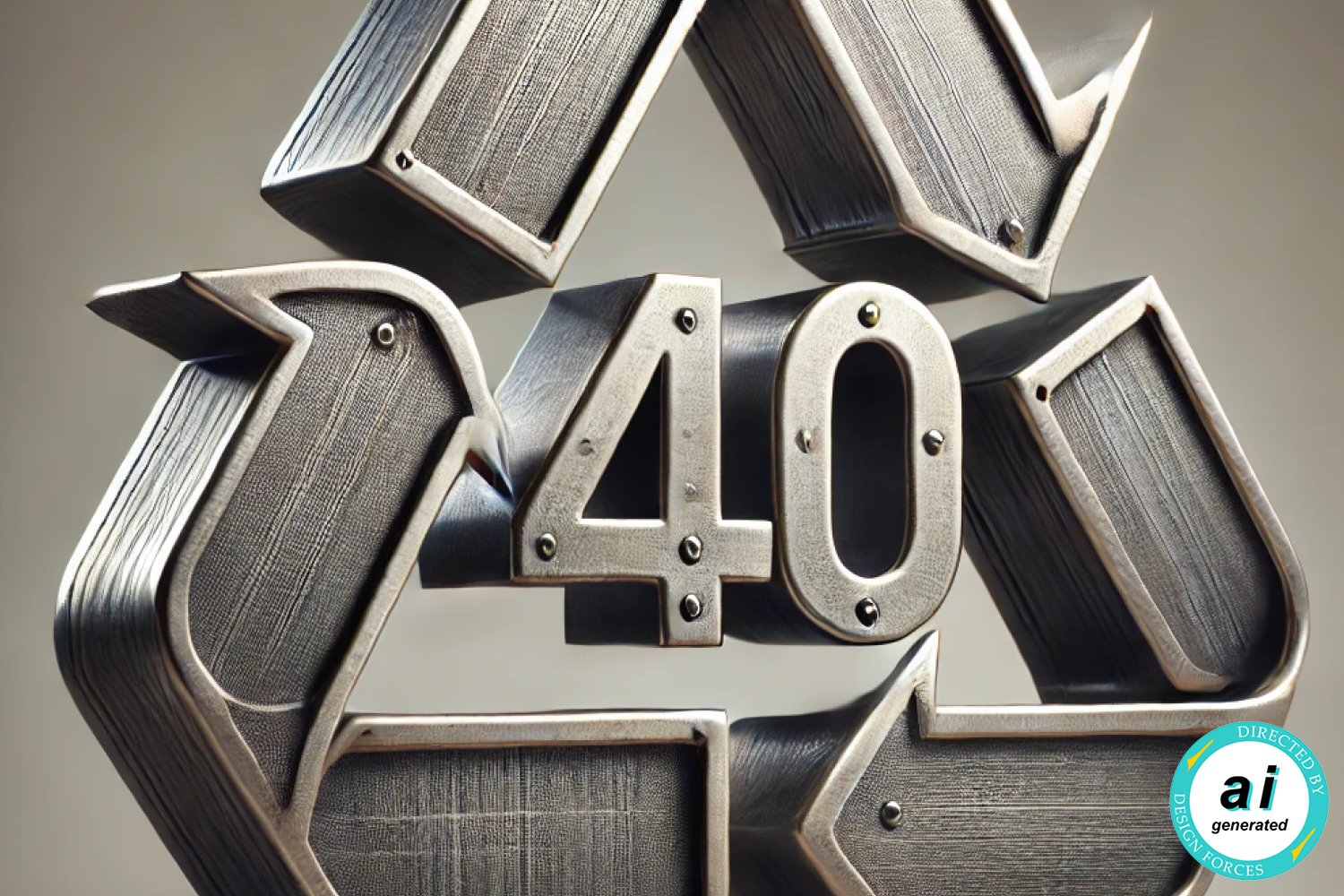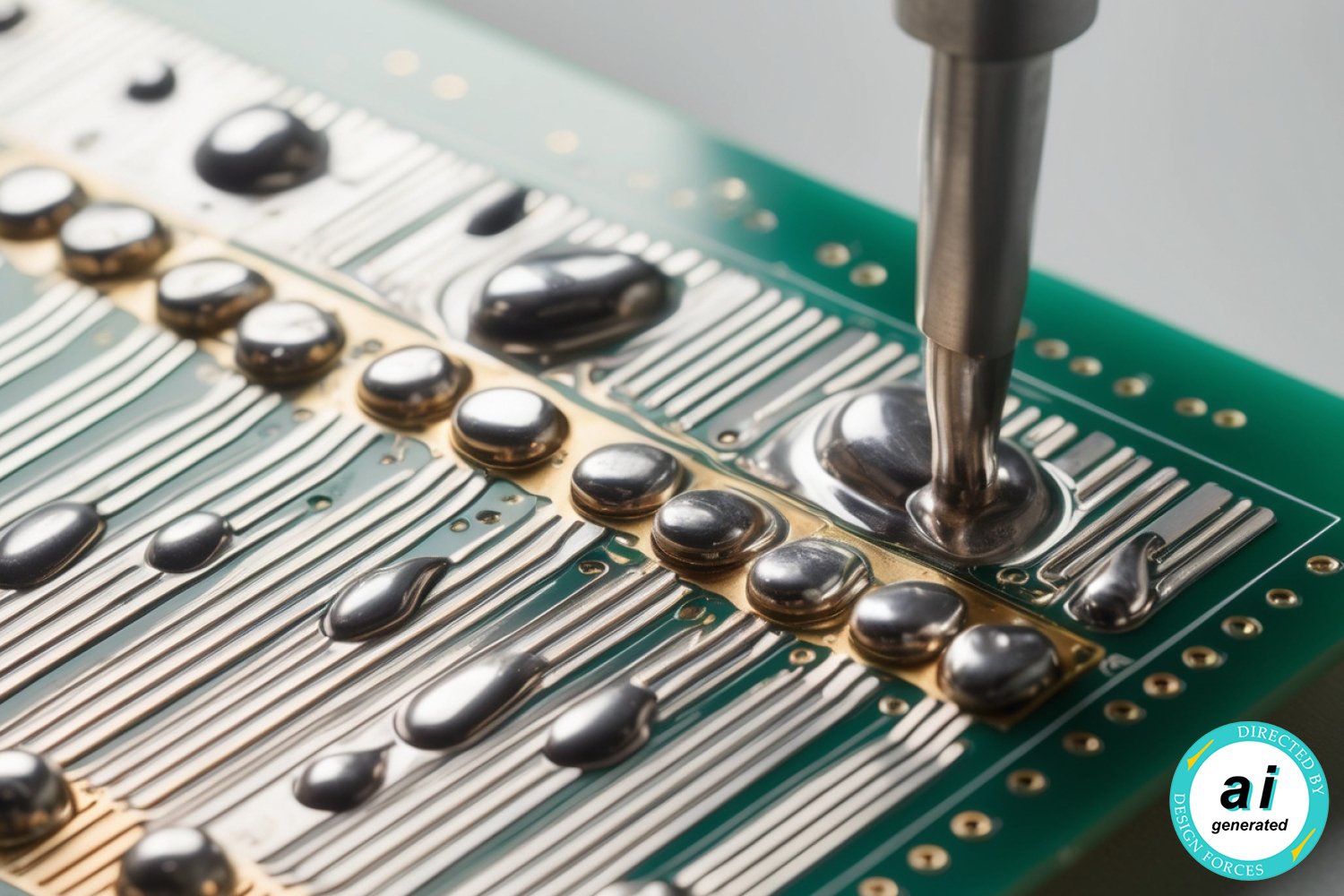Metal
Copper
Characteristics
Highly ductile and malleable with a good resistance to corrosion and a damaging effect on microbes. In addition copper can transfer heat and electricity well. The color is a distinctive, lustrous reddish-brown, which naturally develops into a brown and later greenish patina over time. Forced patination can provide several other hues.
Typical Applications
Products: Water bottles, cookware, decorative plates, vases, sculptures.
Interior: Sinks, doorknobs, handles, hinges, pendant lights, tabletops.
Accessories: Buckles, clasps, bracelets, necklaces, rings, earrings.
Electronics: Chargers, power cords, heat sinks, circuit boards.
Construction: Roof flashing, cladding, plumbing pipes and fittings.
Recycling & Regeneration
Highly recyclable. Involves collecting scrap copper, melting it down, and refining it for reuse with minimal loss of performance or quality. However, matching the purity of newly mined copper is more complex and requires more energy, but standard recycling still uses less energy than extracting and refining new copper from ores.






Gold
Characteristics
The most malleable and ductile metal known, meaning it can be stretched into thin wires or beaten into thin sheets without breaking. An excellent conductor of electricity and heat, it is also one of the least reactive metals, that does not tarnish, corrode, or oxidize. The yellow luster, scarcity, and rarity give it high status and value.
Typical Applications
Jewelry: Rings, necklaces, bracelets, earrings.
Products: Electronic chips, data cables, gilding on frames and statues.
Finance: Investment gold bar/bullion, coins, currency.
Medical: Implants, stents, dental crowns and bridges.
Misc.: Collector coins, aerospace engineering, monetary reserve asset.
Recycling & Regeneration
Highly recyclable, with almost 90% of the gold ever mined throughout history still in use today. Can be reclaimed from electronic waste, jewelry, and industrial scrap through various refining processes and chemical recycling methods. Recycling gold is far more responsible and efficient than mining new.



Iron & Steel
Characteristics
Iron is malleable, ductile, hard, strong, magnetic and able to transfer heat. Alloyed with certain levels of carbon, iron becomes steel that is harder, stronger, more durable, and resistant to corrosion.
The color is silvery-gray, but the surface can be coated with other metals, colored with heat or chemicals, painted, polished, brushed, or sandblasted.
Typical Applications
Products: Stainless steel or cast iron pots and pans, cutlery, utensils, cutting tools, jewelry, springs, bicycles, electronics casings, appliances.
Home: Furniture frames, chairs, tables, sculptures, fences.
Construction: Cables, beams, rails, pipelines, machinery.
Industry: Tanks, weapons, firearms, car bodies, train cars, ship hulls, engine parts, frames, gears, chains, elevators, shopping carts.
Recycling & Regeneration
Steel is among the most recycled materials in the world.
Scrap iron and steel from vehicles, appliances, industry, or construction are being collected. After sorting and cleaning, it can be melted down and reformed with minimal loss of quality.
Recycling is significantly easier, cheaper, and more sustainable than mining new iron ore. Iron and steel has recycling code 40.





Magnesium
Characteristics
Lightweight with high strength. Has an ability to be cast into detailed shapes, but mostly used in the form of alloys for improved performance and for resistance to corrosion and ignition. The burning temperatures can kindle wet tinder and even keep the metal blazing under water. Color is silvery-white and able to add a premium metallic finish.
Typical Applications
Décor: Art, figurines, sculptures.
Furniture: Chairs, tables, and parts thereof.
Products: Power tool bodies. Electronics casings for laptops, phones.
Enlightenment: Fire starters (shavings/grains), flares, fireworks.
Transportation: Engine parts, steering wheels, landing gear, seat frames.
Recycling & Regeneration
Involves collecting and remelting for reuse.
Abundant in nature in minerals and seawater, but recycling is significantly more energy-efficient than the extraction of new magnesium. Additionally, the purity the recycling technologies delivers are increasing so that it can be used in high-quality applications.




Platinum
Characteristics
Heavier than silver or gold, in some contexts also figuratively, and durable with resistance to corrosion and heat. Has catalytic properties that facilitate chemical reactions and are able to reduce pollution. The appearance is silvery-white, but brighter and more reflective. Does not tarnish over time, requiring minimal maintenance.
Typical Applications
Jewelry: Rings, bracelets, necklaces, watches.
Investment: Investment/collector coins, bullion bars.
Industry: Vehicle emissions control, chemical refining, medical devices, electronics.
Recycling & Regeneration
Primarily sourced from mines in South Africa, Russia, and North America. The low-yield mining of platinum is both financially and environmentally costly, making recycling a significant method to meet global demand. Used platinum-containing products are processed for purification and reuse.



Tin & Pewter
Characteristics
Tin is a soft, malleable, silvery-white metal that is highly resistant to corrosion and non-toxic. Pewter is an alloy, made primarily of tin, that has a softer luster, but with increased strength and hardness. Both have a relatively low melting point and are therefore easy to work with, particularly in soldering and casting.
Typical applications
Industry (tin): Float glass base, electronics soldering, coating in cans.
Tableware (pewter): Goblets, tankards, plates, trays, bowls.
Décor (pewter): Figurines, vases, candleholders, trophies.
Jewelry (pewter): Pendants, necklaces, rings, bracelets, bangles, earrings, brooches. A less expensive alternative to silver.
Recycling & Regeneration
Highly recyclable materials.
Tin is frequently recovered from scrap metal and electronic waste. Pewter can also be easily recycled by melting down old items and recasting them into new products.





Zinc
Characteristics
Bluish-white, lustrous metal known for an excellent resistance to corrosion. Galvanized surfaces have a distinctive spangled pattern of crystallized, snowflake-like formations. This becomes more matte and grayish as the zinc forms protective layers. The texture can range from smooth to slightly rough.
Typical applications
Products: Zinc-coated galvanized outdoor products like tubs, buckets, watering cans, furniture frames for chairs and tables. Also faucets and door handles. Often plated with other metals such as chrome.
Industry: Galvanization, where it is used to extend the lifespan of steel and iron by forming a rust protective layer. Seen on poles, tubes, and rails for outdoor, marine, and moist environments. Also in batteries.
Recycling & Regeneration
Important because of the extensive use and finite reserves.
Involves collecting and processing of scrap zinc, that can then be remelted and purified for reuse without significant loss of quality, thereby an efficient and sustainable resource. Estimates are suggesting that around 30% of the global zinc supply comes from recycled materials.










